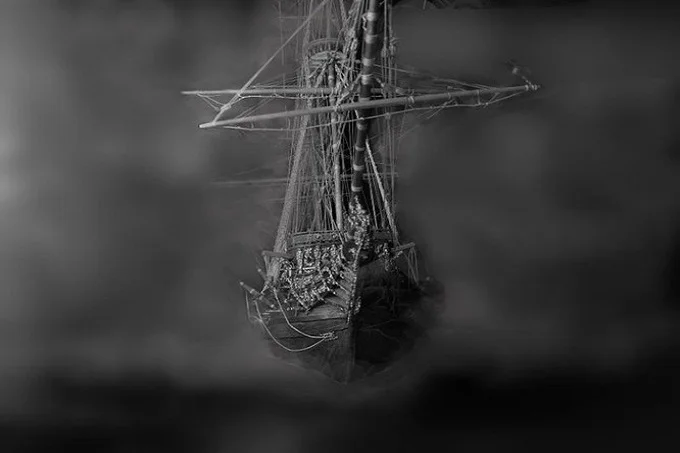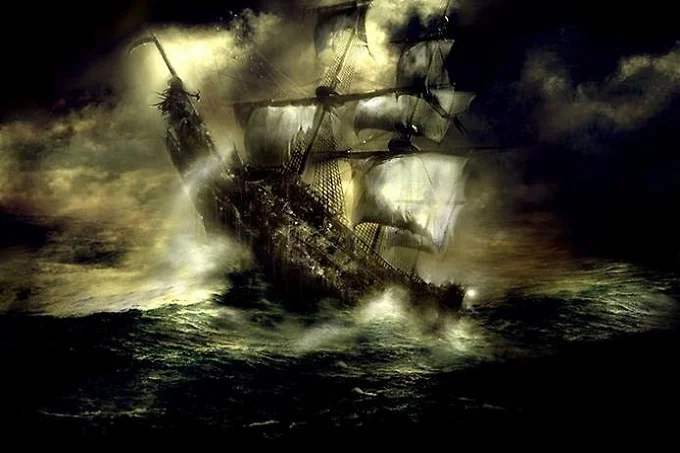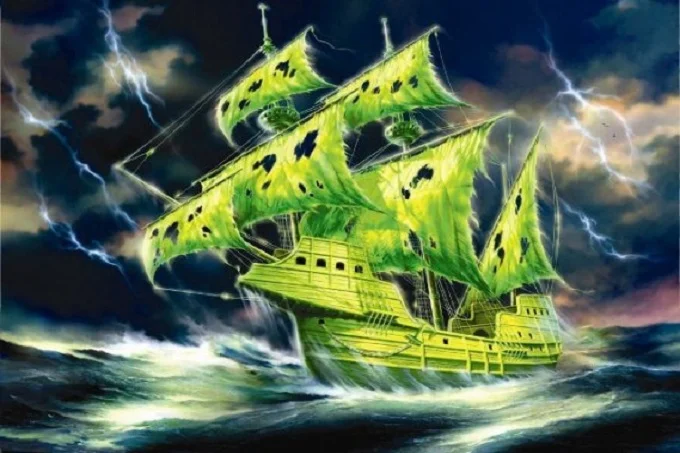The flying Dutchman – legend or reality?

Is the tale of the Flying Dutchman true? From generation to generation, the tale of the Flying Dutchman has been handed down. The heart begins to beat quicker only when the Flying Dutchman is mentioned. The history of this ship, which is shrouded in mystery and romance, has piqued the interest of many historians and scientists. As you can see for yourself, the tale is wonderfully lyrical.
A passenger ship was traveling over the seas in the distant 16th or maybe 17th century, directed by an experienced captain, on a path via the Cape of Good Hope, situated in southern Africa. However, as soon as the ship got close to the cape, a tremendous storm erupted.
The crew requested that the captain dock the ship and wait out the storm. The skipper, on the other hand, denied the crew. He may have been inebriated or perhaps lost his mind. He assured the men that he would sail around the cape no matter what. Dissatisfied with the captain’s choice, the crew and irate passengers rioted, attempting to disarm the frantic skipper. On the other hand, the captain outsmarted the rioters by capturing the rioter’s leader and feeding him to the fish.

Meanwhile, the Legend of the Flying Dutchman is a story about a guy who flies over the world
According to history, God was enraged by this wicked conduct. And it so happened that the sky separated in a moment, the clouds blazed with blazing flames, and a black shadow fell on the ship’s deck. The captain decided to use his weapon to frighten away the oncoming shadow, as is customary in the military. But, all of a sudden, his gun splintered into little fragments in his hands.
The shadow delivered its judgment in a neutral and steadfast tone. “Captain, you are harsh and callous. Your wine will now taste like vomit, and your meal will taste like iron. You will be doomed for all time.” The seamen became half-decayed skeletons after these remarks, and the captain became the Flying Dutchman himself.
God took his time forgiving him. Only the love of a believing lady, according to mythology, can rescue the captain. But how will you transport her over the sea?
The Flying Dutchman travels the world by water. The ghost of a ship is a portent of the ship’s impending doom. Sailors are still scared of the phantom ship, therefore horseshoes are nailed to the masts for good luck.
It is correct to suppose that the story above has a historical basis. Everyone understands those true facts lose their “edges” as time passes.
The mythology is based on a historical incident about a commercial ship that sank in 1641. It tried to cruise around the cape in search of a suitable location to establish and serve as a port of call for the East India Company’s ships.
The tenacious skipper was unfazed by the fierce storm. As is customary, the conflict between man and nature came to a close. Interestingly, here is where the tale began. The captain yearned to reach the cape’s eastern side, and he planned to do it even if it meant going to the end of the planet. When the devil heard his statements, he resolved to assist him by bestowing immortal “life” onto him.

Another, more probable account is that near the end of 1770, a ship moored on the island of Malta, stranding the whole crew. Yellow fever had affected everyone, even the captain. The Grand Master of the Order of Malta ordered the ship and its 23 passengers to be pulled out of port. The ship traveled to Tunisia, but the authorities had previously issued a warning and refused to let the ship dock. Later, the crew departed from Naples. The sailboat was also denied entry. In France and England, the same thing occurred. The crew perished slowly but surely. On board, a bunch of skeletons appeared.
In 1881, the British ship Bacchante came dangerously close to colliding with the Flying Dutchman, which was carrying a young prince at the time. Everything worked out well. The prince was blessed with a long life by fate. The prince ascended to the throne of the United Kingdom as King George V. However, the sailor on duty died tragically shortly after.
Even in the twenty-first century, the legendary ghost ship appeared. Many South African bathers saw it in March 1939. That day, several publications covered it.
Ships without a crew of sailors or a commander are often seen in the seas and oceans. Such findings are difficult to explain. There have been instances where staff vanished in the midst of a beautiful day.
What happens to the crews of ships?
For generations, people have been striving to unravel this enigma. There are many theories about it, starting with the far-fetched – alien abductions, people transitioning to a parallel world, other dimensions, and attacks by sea monsters; but others are also plausible, such as mass poisonings, epidemics, or the crew being washed overboard, pirate attacks, or a zone of intense ultrasound radiation (in which the crew dies). What occurs in the actual world? That’s something we’re unlikely to find out. The water is a master at concealing information.




